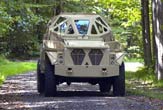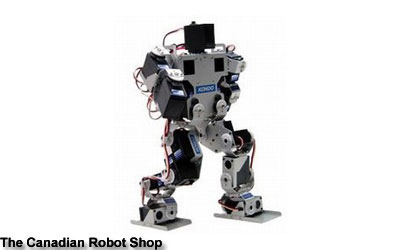NASCAR Engineers Help Design New Combat Vehicle

The U.S. military unveiled this week a concept combat vehicle that combines new blast-deflection technology with the safety features of a commercially available truck and NASCAR engineering.
Everything from the materials to seating configuration has been rethought.
Built on the skeleton of a Ford F-350 truck, the vehicle is called the ULTRA AP (Armored Patrol). Its builders melded some of the latest advancements in vehicle defense with the maneuverability and safety features of an "off-the-shelf" truck to develop a concept vehicle that may one day replace the familiar Humvee in the battlefield.
"The idea of using an off-the-shelf vehicle is that it already has that stuff in it," Georgia Tech Research Institute (GTRI) principal research engineer Gary Caille told LiveScience. "The automotive industry has spent a lot of money evaluating these chassis for safety and we can make use of that."
Safer seating setup
The ULTRA AP was developed at the GTRI, which brought together engineers from the commercial automotive and military worlds. The idea was to save money by marrying advanced armor materials and designs with proven safety designs from the automotive industry.
"By bringing together experienced commercial vehicle designers with experts in advanced materials and cutting-edge engineering, we are providing a test bed for evaluating technologies that can help the military develop true 'leap-ahead' concepts," said David Parekh, GTRI's deputy director. "By including persons with high-performance automotive engineering and NASCAR expertise as part of our team, we were able to root this advanced concepts project in real-world vehicle design."
Sign up for the Live Science daily newsletter now
Get the world’s most fascinating discoveries delivered straight to your inbox.
Specifically, GTRI engineers wanted to safety and survivability. The first step was to use lightweight, cost-effective armor.
Second was to shift the four passengers from the traditional two-by-two seating configuration to a diamond arrangement with one person facing out the front, one facing out the back, and one facing each side. Not only does this give all around better visibility, but it provides better protection from land mines.
"This moves people away from the wheels, which are typically what initiates a mine," Caille said. "The idea is to move passengers further way from the blast."
Blast bucket
Passengers are also tucked into what is called a "blast bucket," an armored shell in the vehicle that deflects explosions and acts as a roll cage if the vehicle flips.
Computers integrate steering, suspension and braking, Caille said, providing a level of mobility and safety that's unparalleled by even the most advanced current production military vehicles.
"The performance features are standard stability control and anti-lock brakes," Caille said. "And because the vehicle is based on a commercially available model, other features like active cruise control can easily be added."
The Office of Naval Research (ONR) provided funds to help build the ULTRA AP to evaluate technology that could improve future vehicle designs. The vehicle has been delivered to the ONR, which will now evaluate it and determine whether to move on with the project.
The ULTRA AP will be on display at the "Modern Day Marine Expo" at the Marine Corps Air Facility in Quantico, Va. from Sept. 13th to 15th.
- The Military's Walrus: An Unlikely Flying Machine
- Robotic Hummer Sets Speed and Distance Records
- New Theory: How to Make Objects Invisible
- Military Mulls Use of 'Star Trek' Weapons
- Military Tests Miniature Spy Plane
Robot World

Real Robots: VOTE for Your Favorite










